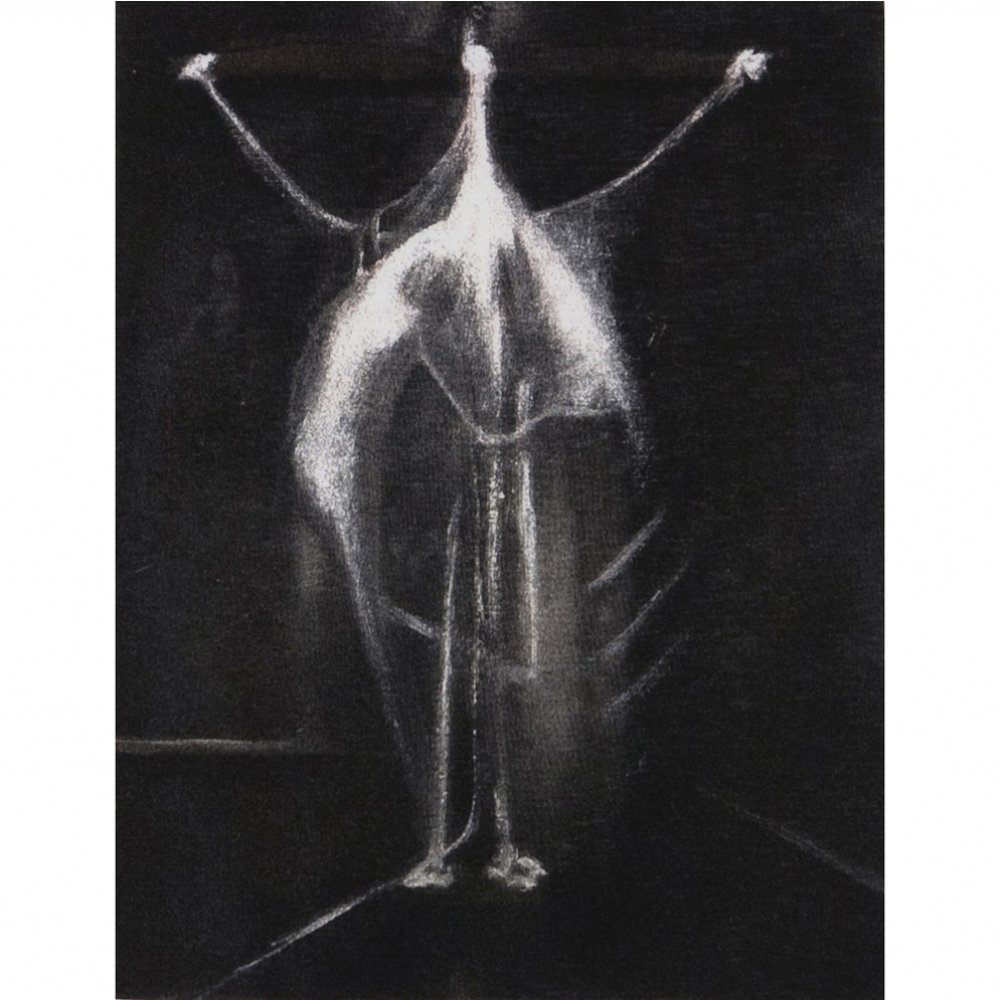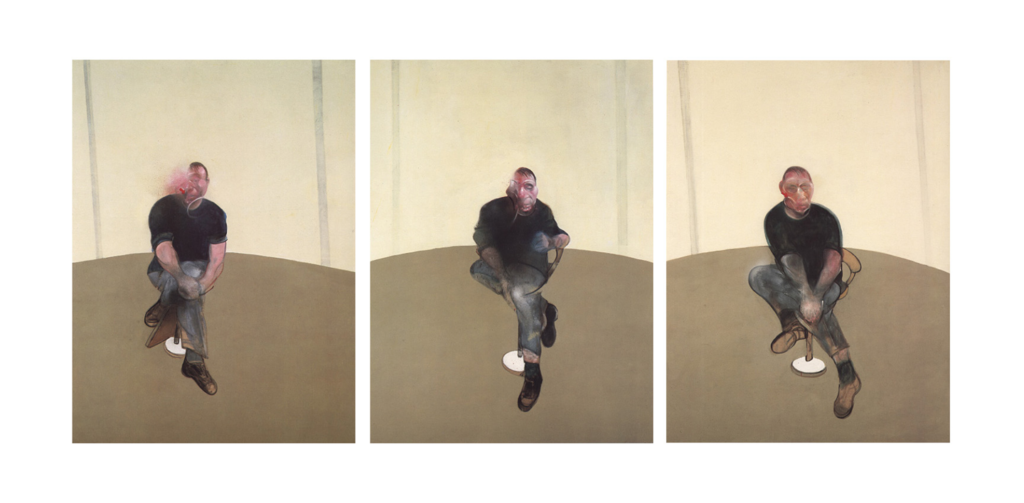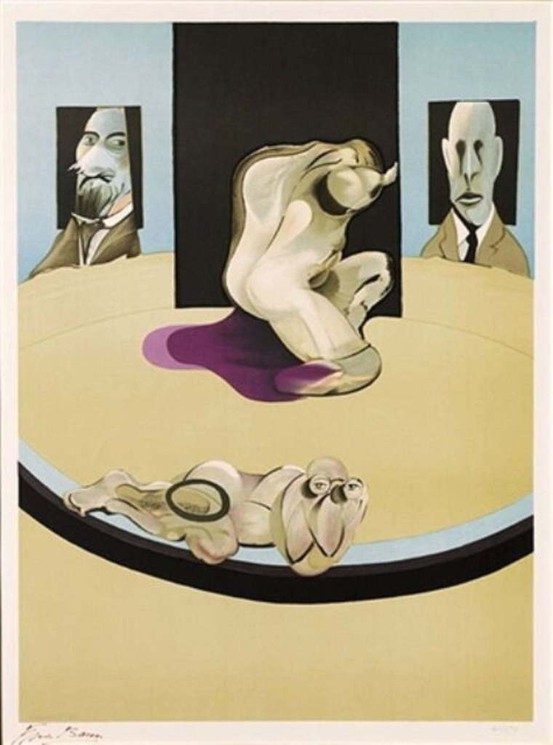This article analyzes two paintings by the star of the auctions, Francis Bacon.
Francis Bacon traveled extensively in Europe before starting to paint since his homophobic father kicked him out of the house. He painted his first painting “Crucifixion” in 1933. This small format painting was immediately purchased by the collector Sadler, who commissioned the artist to have a portrait based on an x-ray of his head.
Francis Bacon played with the idea of x-rays, experimenting with the transparency of paint. His crucifixion is more evoking of a carcass than of a Christ on the cross.
Francis Bacon mastered the technique of painting even though he was a self-taught artist. This work differs from the famous works of Bacon in the following qualities:
- small format;
- black and white;
- without a human figure.
And yet all the obsessions by Francis Bacon are already there: death, religion, liquefaction of the body.

In 1989, Francis Bacon was diagnosed with kidney cancer. His health deteriorated greatly. But the 80s, nevertheless, were the most fertile years of his career. It was an almost Christlike artistic climax.
For the past 10 years, Francis Bacon has sought to simplify his pictorial language and get to the point. His cruel, burning, bloody and dark technique in this period of creativity became richer and more detailed.
The use of spray paint allowed him to create a grainy surface, as if the canvas were covered with gauze. Some critics have interpreted this as a metaphor for his failing eyesight, or a veil of illness about which Francis Bacon had a bad feeling.

His palette has also changed. Acid red and neon orange colors on his canvases gave way to gray, blue and cream tones. After creating portraits of his artist friends, Francis Bacon focused on himself in a calm and balanced composition.
His death was caused not so much by illness as by devastating alcoholism. Shortly before this, Bacon’s work was gradually moving away from the paralyzing power of his early paintings, giving way to a more serene vision, detached from the torment that haunted him.

























